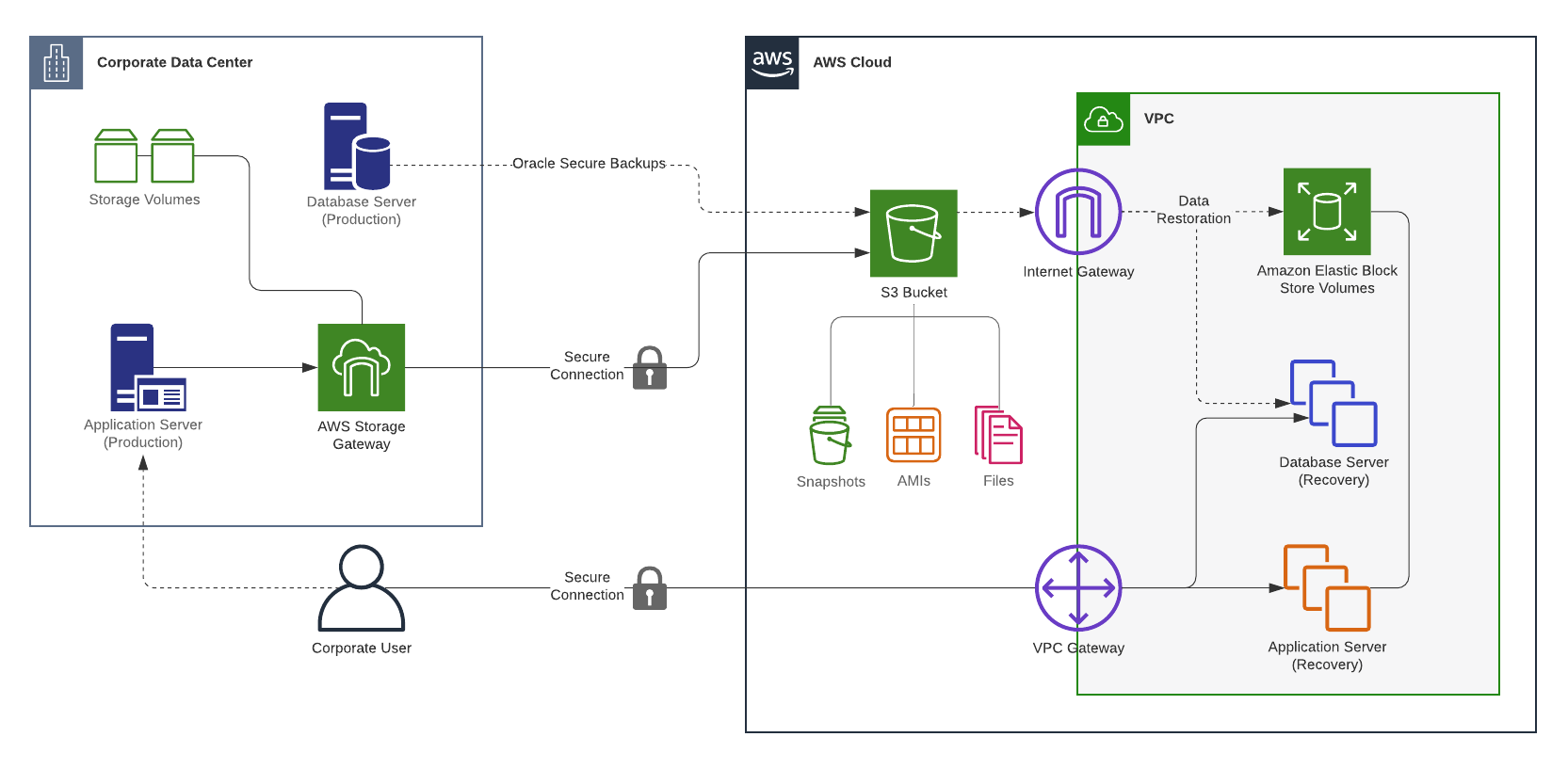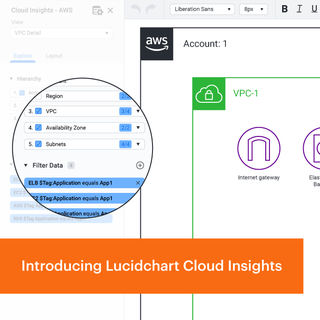
How cloud visibility can save companies money
Lucid Content
Reading time: about 8 min
Just like its weather-causing namesake, the cloud has a lot of real-time changes that teams need to track. For all of the cloud’s advantages, a lack of visibility into those changes introduces challenges that can increase your costs if you’re not careful. Unless organizations track usage and updates to their cloud, they can very quickly lose sight of how much their cloud is sprawling or how much the cloud is actually costing them. Greater visibility helps you keep these costs under control and helps with incident response.
Once every team in your organization knows how the cloud is being used and where optimization is needed, you will be in a better position to reduce downtime, save on your cloud budget, and improve return on investment from your cloud infrastructure.
What is cloud visibility?
Cloud visibility is having detailed insight into your team’s cloud infrastructure and usage. Given all the different processes and projects involved in development and operations, internal cloud use can be increasingly difficult to track and manage. Improved cloud visibility allows you to understand what is really going on in your infrastructure so you can more effectively manage cloud spend, optimize your cloud usage, and respond effectively to downtime incidents.
Gaining better cloud visibility can help with:
- Cloud spend: Review your usage and compare it with your cloud budget.
- Migration and changes: Plan your infrastructure migration and changes with greater insights into current architecture and limitations.
- Incident response: Pinpoint causes and resolve incidents faster.
A visual view of your cloud architecture, such as cloud architecture diagrams created in Lucidscale, provides organizations with greater understanding of what is currently live in their cloud environment, all by auto-generating a cloud diagram from your cloud provider data. This improved visibility allows organizations to optimize their cloud services, such as cost, updates, and more.
Digital modernization, transformation, and cloud visibility
Other forces influence how the cloud works within organizations, too. With today’s organizations moving to the cloud as part of their digital transformation or digital modernization efforts, many teams are finding themselves with extensive cloud spend, component usage they’ve forgotten about, or cloud data without helpful analytics.
The cloud’s promise of improved efficiency and reduced costs, for many, is still unrealized or in progress—leading some IT teams to continue searching for ROI without stepping back to look at how their cloud architecture was developed initially.
You can use the cloud more efficiently. But cloud infrastructure can be notoriously challenging to review and understand, especially if you’re just picking through lines and lines of code. And without the ability to deep-dive into real-time cloud deployments, it’s nearly impossible to see what’s really going on, what to do next, and how to keep the right stakeholders informed.
The costs of limited visibility
Whenever your team is trying to guess where cloud usage can be improved upon, your organization could be adding unnecessary expense without addressing the right problems. If environments are running without knowing what is happening in the instance or across teams, then there could be significant missed opportunities to realize savings or where money is being wasted.
Not being able to see the full picture of your cloud architecture and activity (or even losing cloud instances) is relatively common, so we certainly wouldn’t judge you if you just recently realized cloud visibility might be an issue for your team.
But it’s probably something to address sooner than later. Because lack of visibility can lead to failure to respond effectively to downtime—an incident that can be costly—as much as $9,000 per minute—and may mean backtracking or continuing to lose money until issues are resolved.

Causes of limited cloud visibility
Limited cloud visibility can have many different underlying causes:
- Lack of up-to-date cloud architecture diagrams: Without a cloud architecture diagram or with one that is out-of-date, it is difficult to know what is really going on in your cloud.
- Console limitations that aren’t apparent: What exactly is running inside your cloud accounts may not be readily apparent from your console.
- Cloud vendors don’t provide data: Many teams have found that cloud vendors themselves often don’t provide enough data and tools to review cloud usage and look for trends.
- Dynamic changes and evolution: With lots of users and fluctuating demand, real-time visibility is more valuable than static information about your cloud.
- Opening too many new cloud services accounts: Let's say you’re using AWS and Google Cloud now, or you intentionally pursued a multi-cloud strategy from the start and quickly accumulated a lot of extra cloud service usage. Having more than one cloud account complicates your cloud environment and means having to do more to manage it.
- Cloud vendor and strategy changes: If your team has pivoted approaches to the cloud and did not communicate these changes across teams, then you could be spending more than necessary.
- Growing production workload use of the public cloud: Over time, production use of the cloud grew beyond the point where you could efficiently track it using the dashboards you have now.
- Multi-region, distributed cloud that’s sprawling: Increased availability meant expanding to other regions, but in the process, you now have a sprawling cloud to keep track of.
- Cloud visibility was not a priority: Early use of the cloud in your organization wasn’t focused on having visibility, so now you are working to regain a comprehensive view of your cloud use.
Many of these causes can be balanced or reduced with better, up-to-date information about your cloud architecture and cloud usage. Instead of guessing where cloud usage is inefficient, you can access direct information to inform your teams’ decisions. Cloud visibility shows you were to trim usage, increase spending, and change your cloud habits to get the most out of your cloud use. But it’s hard to make those decisions without proper data and documentation.
Cost-saving benefits of cloud visibility
Greater cloud visibility grants teams additional flexibility with their cloud environments and helps you pinpoint where you can save resources—whether that means rearchitecting to cut cloud costs, effectively reacting and restoring uptime during incident response, or simply avoiding rework across teams. These advantages of cloud visibility can ultimately save your organization money while improving your results from cloud infrastructure.
Creating a single source of truth
- Streamline with the big picture in view: Instead of piecemeal data and analysis through different consoles, your single view of your entire cloud allows you to comfortably track changes and make adjustments without the guesswork. You can use Lucidscale to see updates to your cloud infrastructure as you make them.
- Multi-cloud in one view: Bring your cloud services together to one dashboard and get a handle on your multi-cloud use.
- Don’t lose track: Feel comfortable adding instances, expanding to other geographies, and making the most of your cloud infrastructure.
- Plan changes: Know what your existing cloud looks like before planning changes to your infrastructure. Collaborating through Lucidscale, your team can communicate these changes with others in your company in real-time.
- Save time: Instead of having to track down everything, having cloud visibility allows you to know exactly what is happening with your cloud usage. With Lucidscale, you can auto-generate diagrams, so you never have to spend hours manually building them again.
- Respond to downtime: Cloud visibility improves your incident response and can help you minimize downtime. Given that an incident of downtime can cost $9,000 per minute or more, better incident response can generate savings while improving user experience.
Monitoring traffic
- End instances you no longer use: When your team is done with individual instances, you can identify and end them.
- Know when performance is declining: If part of your cloud infrastructure is struggling or experiencing bottlenecks, a cloud architecture diagram can show you exactly where the problem areas are so your team can act accordingly.
- See cloud servers you forgot to turn off: Avoid forgetting about servers you don’t regularly use or forgot about.
- Verify implementation was done correctly: Follow along with implementation and verify progress your team has already made.
- Detect security compromises and downtime: See real-time activity on your network and identify abnormalities.
Collaborating with your team
- Host architecture reviews: Cloud visibility makes it possible to review your cloud architecture together as a team. Lucidscale provides updated, real-time visualization of your cloud architecture.
- Share data and visuals: With access to the same data, your organization can review and make suggestions.
- Real-time collaboration: Instead of basing discussions on static data and lines of code,, your team can collaborate live.
- Get a 360-degree view remotely: With better cloud visibility, your remote team still has the big picture of your cloud usage.
- Respond to incidents: Move quickly in response and review incidents using real-time visuals of your current cloud environment.
How to increase cloud visibility
The benefits of cloud visibility are attainable with access to the right tools. Lucidscale allows you to dynamically connect your cloud infrastructure services to auto-generate cloud diagrams, providing visibility into your current environment and ultimately saving you time and money down the road.

Find how you can automatically visualize your cloud infrastructure with Lucidscale.
Learn moreAbout Lucidchart
Lucidchart, a cloud-based intelligent diagramming application, is a core component of Lucid Software's Visual Collaboration Suite. This intuitive, cloud-based solution empowers teams to collaborate in real-time to build flowcharts, mockups, UML diagrams, customer journey maps, and more. Lucidchart propels teams forward to build the future faster. Lucid is proud to serve top businesses around the world, including customers such as Google, GE, and NBC Universal, and 99% of the Fortune 500. Lucid partners with industry leaders, including Google, Atlassian, and Microsoft. Since its founding, Lucid has received numerous awards for its products, business, and workplace culture. For more information, visit lucidchart.com.
